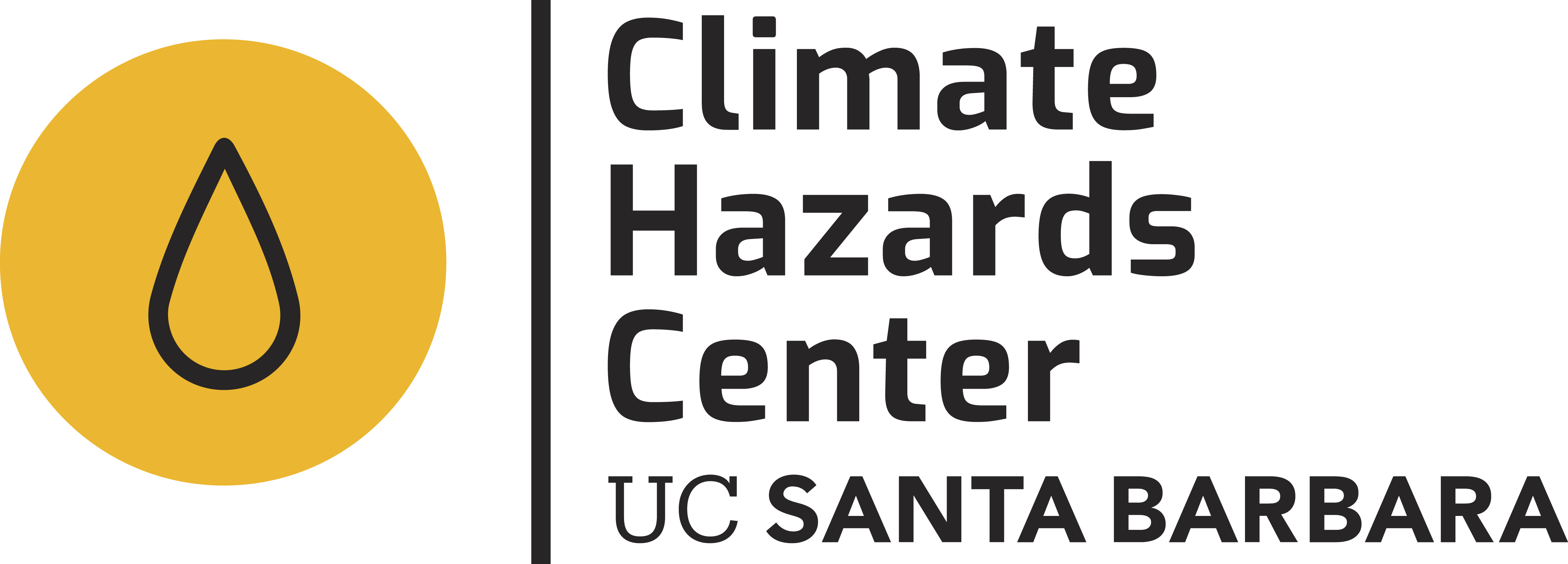CHC Early Estimates
CHIRPS-GEFS
The CHIRPS-GEFS data set uses the higher spatial resolution of CHIRPS and the advanced forecasting ability of the NCEP GEFS to provide daily bias-corrected next 1-to-16 day and pentadal rainfall forecasts, at a spatial resolution of 0.05 degree across the globe. Combining the CHIRPS and CHIRPS-GEFS data enhances agroclimatic and hydrologic hazards early warning capabilities.
CHIRPS-GEFS data is now available for CHIRPS v3 data users.
Early Warning eXplorer (EWX)
The Early Warning eXplorer (EWX) is a web-based single-page application for exploration of geospatial data related to drought monitoring and famine early warning. The EWX enables scientists, analysts, and policymakers to view diverse data sets side-by-side in the same spatial bounding box, and to step through sequences of multiple time-series data sets simultaneously.
Seasonal Multi-Model Ensemble Forecasts (NMME)
East Africa Special Reports
These reports provide seasonal analyses, combining observed CHIRPS data up to the latest observed dekad, CHIRPS-GEFS precipitation forecasts, and analog-year based precipitation observations through the remainder of the season. Rain gauge observations from Ethiopian Meteorological Institute (EMI), the Kenya Meteorological Department (KMD), and the Somalia Department of Meteorology are blended with CHIRPS for up-to-date assessments of rainfall conditions throughout major growing seasons. East Africa Special Reports are made possible by a partnership between the CHC and the Ethiopia NMA, KMD, the Somalia Department of Meteorology, and FAO SWALIM.
Afghanistan Special Reports
This report evaluates a variety of meteorological and climatological indicators that impact water resources and agriculture across Afghanistan. It also includes a synthesis of various forecasts to anticipate future conditions. Finally, the report summarizes the likelihood of various precipitation outcomes given the season-to-date accumulations.
Monthly Agroclimate Outlooks
The Climate Hazards Center scientists and partners in the Famine Early Warning Systems Network (FEWS NET) Science Team conduct monthly assessments of observed and anticipated growing season conditions in regions of sub Saharan Africa and Latin America, Afghanistan, and elsewhere. These draw from many sources of information, including CHIRPS rainfall data, satellite observations, hydrologic models, crop yield analyses, and sub seasonal and seasonal climate forecasts. Presentations from recent assessments are available here.
Climate Modes
Maps and factsheets that summarize global precipitation patterns associated with major climate modes, including El Niño, La Niña, and the Indian Ocean Dipole.
Experimental Subseasonal Forecasts (SubC)
Subseasonal predictions bridge the gap between short-range weather forecasts and long-range seasonal climate predictions. CHC uses the latest 10 to 30-day Subseasonal Consortium (SubC) forecasts, acquired from the IRI Data Library, to provide maps and data that can support outlooks on agricultural and hydrological conditions and early warning systems for food security.
Strategy
At the Climate Hazards Center, we use and support a variety of data products for monitoring and forecasting agroclimatic conditions in FEWS NET regions.
For a region's major cropping season, FEWS NET's science partners begin evaluating climate forecasts months to weeks before the expected onset to seasonal rainfall. After this point and for the duration of the season, the timeliness and quality of rainfall and vegetation response are closely monitored. Atypical conditions that might be negatively impacting rain fed crop and pasture development can often be identified by lengthy periods of below-average rainfall and substantial delays in rainfall onset, especially in short duration season areas. Products like CHIRPS-GEFS and the CHC Early Estimates are useful for gauging the severity and likelihood of continuation of rainfall deficits in the next two weeks.
To more throughly investigate agroclimatic conditions and for specific areas of concern, FEWS NET's science partners use a convergence of evidence approach. Key resources for this are in situ observations, field reports from FEWS NET regional scientists, and remotely sensed and modeled data. These assessments are used to support FEWS NET's food insecurity outlooks, of which the CHC actively contributes to. The CHC produces the CHIRPS data set, the new CHIRTS temperature data set, and provides custom data analyses to support FEWS NET food security outlooks.
Access
Many of the data products used in assessments are accessible through the FEWS NET Data Portal (click here.) FLDAS data products can also be accessed through NASA's website (click here for water stress and other products) and the NASA Giovanni portal. Additional products, including FLDAS modeled hydrologic variables based on CHIRPS Preliminary data and more variations of CHIRPS and CHIRPS-GEFS can be accessed through the Early Warning Explorer hosted by the CHC (click here.)
